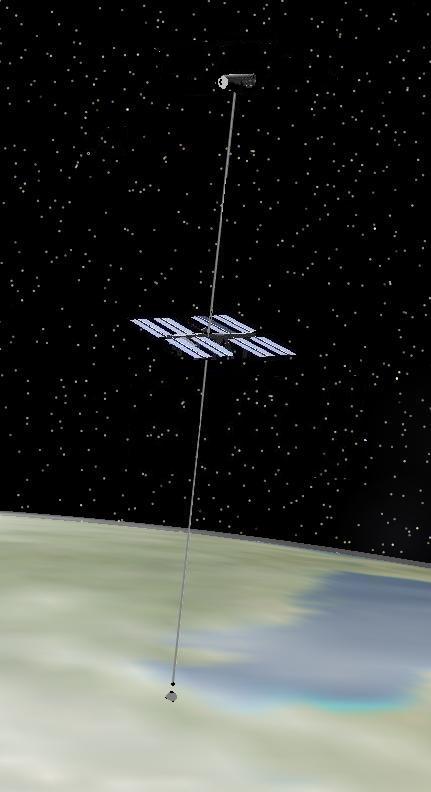BY LETTER
Rotovator
Technology > Technology Type or Material > Drytech/Hylotech
Technology > Application > Infrastructure
Technology > Application > Transportation > Interplanetary Transport
Technology > Application > Megascale Engineering
Technology > Technology Levels > Middle Tech / Midtech
Technology > Application > Transportation > Surface-To-Orbit Transport
Technology > Application > Infrastructure
Technology > Application > Transportation > Interplanetary Transport
Technology > Application > Megascale Engineering
Technology > Technology Levels > Middle Tech / Midtech
Technology > Application > Transportation > Surface-To-Orbit Transport
Rotovator | |
 Image from Steve Bowers | |
| This rotovator uses photovoltaic energy to raise its orbit when necessary | |
To utilize a rotovator for a comparative low energy planet to orbit transfer, a hypersonic shuttle takes a payload up to rendezvous with one end of a rotating tether, consisting of two artificial satellites joined by a line in tension and rotating around a common centre of gravity. Once the payload is attached the tether continues to rotate until the payload is in orbit, however with a lower centre of gravity.
For interplanetary transfer, a payload is attached to a rotovator in an elliptical planetary orbit which tosses it towards a neighboring planet, where a second tether meets it and rotates it into orbit or even directly to the surface on a low gravity moon. The kinetic energy acquired by the receiving tether can be used in part to return payloads and maintain a dynamic equilibrium. If the tether loses too much knetic energy the shortfall can be replaced using photovoltaic panels or other forms of propulsion.
These systems are popular with developing solar systems in the outer volumes where energy and advanced technology are expensive. Large extravagant rotovator systems are used in many MPA systems, apparently just for entertainment and general exuberance. Most advanced polities and angelnet protectorates prefer static space elevators using advanced materials and powered orbital transfers giving the advantage of controllability.
Related Articles
- Lofstrom Loop
- Lorrey Loop - Text by Steve Bowers
Advanced form of Lofstrom Loop using three geostationary terminii in orbit at the points of an equilateral triangle, and three ground terminii opposite them, connected by a stream of vessels or particles which travel in Hofmann orbits (except when in the atmosphere), thereby saving energy. - Mass-Stream Technology (Space Fountains and Orbital Rings)
- Self-Propulsive Tethers - Text by Steve Bowers
Satellites which are joined by tethers orbiting any world with a magnetic field will generate electrical power by passing through the lines of magnetic force; this energy can be used to power ion thrusters for example and thereby power rotating tether systems, amongst other uses. - Skywheel
- Vertical Skyhooks and Static Orbital Rings
Appears in Topics
| Drytech/Hylotech | Infrastructure | Interplanetary Transport |
| Megascale Engineering | Middle Tech / Midtech | Surface-To-Orbit Transport |
Development Notes
Text by Steve Bowers
Initially published on 03 July 2002.
Initially published on 03 July 2002.






